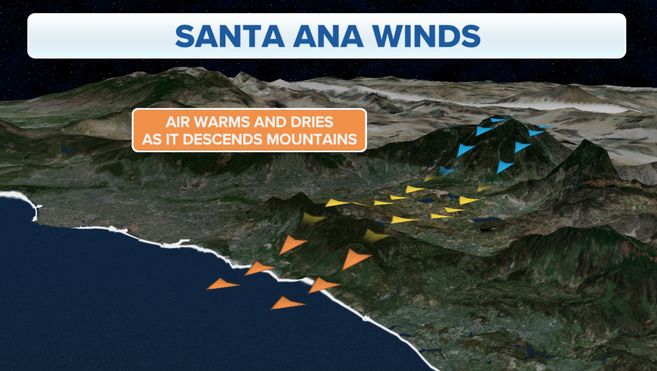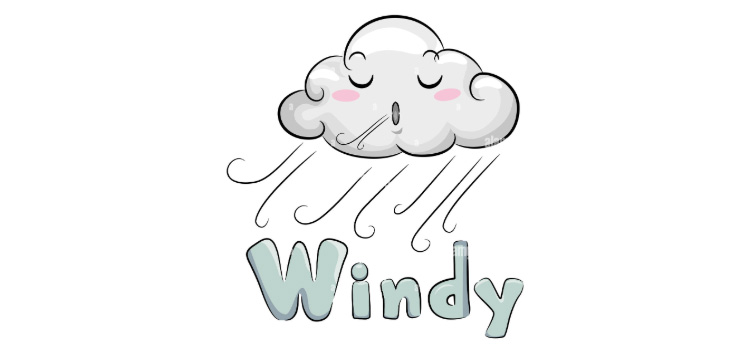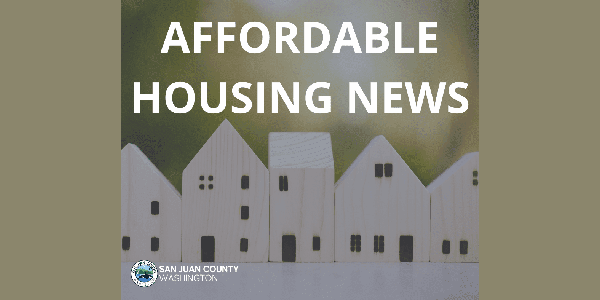||| BY JOAN DIDION |||
There is something uneasy in the Los Angeles air this afternoon, some unnatural stillness, some tension. What it means is that tonight a Santa Ana will begin to blow, a hot wind from the northeast whining down through the Cajon and San Gorgonio Passes, blowing up sand storms out along Route 66, drying the hills and the nerves to flash point. For a few days now we will see smoke back in the canyons, and hear sirens in the night.
I recall being told, when I first moved to Los Angeles and was living on an isolated beach, that the Indians would throw themselves into the sea when the bad wind blew. I could see why. The Pacific turned ominously glossy during a Santa Ana period, and one woke in the night troubled not only by the peacocks screaming in the olive trees but by the eerie absence of surf. The heat was surreal. The sky had a yellow cast, the kind of light sometimes called “earthquake weather”. My only neighbor would not come out of her house for days, and there were no lights at night, and her husband roamed the place with a machete. One day he would tell me that he had heard a trespasser, the next a rattlesnake.
“On nights like that,” Raymond Chandler once wrote about the Santa Ana, “every booze party ends in a fight. Meek little wives feel the edge of the carving knife and study their husbands’ necks. Anything can happen.” That was the kind of wind it was. I did not know then that there was any basis for the effect it had on all of us, but it turns out to be another of those cases in which science bears out folk wisdom.
The Santa Ana, which is named for one of the canyons it rushers through, is foehn wind, like the foehn of Austria and Switzerland and the hamsin of Israel. There are a number of persistent malevolent winds, perhaps the best know of which are the mistral of France and the Mediterranean sirocco, but a foehn wind has distinct characteristics: it occurs on the leeward slope of a mountain range and, although the air begins as a cold mass, it is warmed as it comes down the mountain and appears finally as a hot dry wind. Whenever and wherever foehn blows, doctors hear about headaches and nausea and allergies, about “nervousness,” about “depression.”
In Los Angeles some teachers do not attempt to conduct formal classes during a Santa Ana, because the children become unmanageable. In Switzerland the suicide rate goes up during the foehn, and in the courts of some Swiss cantons the wind is considered a mitigating circumstance for crime. Surgeons are said to watch the wind, because blood does not clot normally during a foehn. A few years ago an Israeli physicist discovered that not only during such winds, but for the ten or twelve hours which precede them, the air carries an unusually high ratio of positive to negative ions. No one seems to know exactly why that should be; some talk about friction and others suggest solar disturbances. In any case the positive ions are there, and what an excess of positive ions does, in the simplest terms, is make people unhappy. One cannot get much more mechanistic than that.
Easterners commonly complain that there is no “weather” at all in Southern California, that the days and the seasons slip by relentlessly, numbingly bland. That is quite misleading. In fact the climate is characterized by infrequent but violent extremes: two periods of torrential subtropical rains which continue for weeks and wash out the hills and send subdivisions sliding toward the sea; about twenty scattered days a year of the Santa Ana, which, with its incendiary dryness, invariably means fire. At the first prediction of a Santa Ana, the Forest Service flies men and equipment from northern California into the southern forests, and the Los Angeles Fire Department cancels its ordinary non-firefighting routines. The Santa Ana caused Malibu to burn as it did in 1956, and Bel Air in 1961, and Santa Barbara in 1964. In the winter of 1966-67 eleven men were killed fighting a Santa Ana fire that spread through the San Gabriel Mountains.
Just to watch the front-page news out of Los Angeles during a Santa Ana is to get very close to what it is about the place. The longest single Santa Ana period in recent years was in 1957, and it lasted not the usual three or four days but fourteen days, from November 21 until December 4. On the first day 25,000 acres of the San Gabriel Mountains were burning, with gusts reaching 100 miles an hour. In town, the wind reached Force 12, or hurricane force, on the Beaufort Scale; oil derricks were toppled and people ordered off the downtown streets to avoid injury from flying objects. On November 22 the fire in the San Gabriels was out of control. On November 24 six people were killed in automobile accidents, and by the end of the week the Los Angeles Times was keeping a box score of traffic deaths. On November 26 a prominent Pasadena attorney, depressed about money, shot and killed his wife, their two sons and himself. On November 27 a South Gate divorcée, twenty-two, was murdered and thrown from a moving car. On November 30 the San Gabriel fire was still out of control, and the wind in town was blowing eighty miles an hour. On the first day of December four people died violently, and on the third the wind began to break.
It is hard for people who have not lived in Los Angeles to realize how radically the Santa Ana figures in the local imagination. The city burning is Los Angeles’s deepest image of itself. Nathaniel West perceived that, in The Day of the Locust, and at the time of the 1965 Watts riots what struck the imagination most indelibly were the fires. For days one could drive the Harbor Freeway and see the city on fire, just as we had always known it would be in the end.
Los Angeles weather is the weather of catastrophe, of apocalypse, and, just as the reliably long and bitter winters of New England determine the way life is lived there, so the violence and the unpredictability of the Santa Ana affect the entire quality of life in Los Angeles, accentuate its impermanence, its unreliability. The winds shows us how close to the edge we are.
**If you are reading theOrcasonian for free, thank your fellow islanders. If you would like to support theOrcasonian CLICK HERE to set your modestly-priced, voluntary subscription. Otherwise, no worries; we’re happy to share with you.**









The only comparable weather feature we have are the Fraser Gap winds that blow out of the ENE in winter, often reaching 50 mph. That’s what caused the brutal cold snap a year ago in mid-January 2024. But the are Cold, not Hot like the Santa Anas.
Comparable in that high pressure domes form in the interior and push out toward the coast. The Nor’easters you mention result from a high parked way north and those pressure gradient winds funnel and increase in velocity down the Fraser and sweep strong cold winds into us. The Santa Anas are classic catabatic or foehn winds emanating from a strong high dome in the dry interior in winter but due to acceleration and compression heating as they drop over the mountain ranges creating strong warm gusty winds in SoCal. Our unusual summer “heat domes” are also roughly comparable in that hot dry air from the Interior pushes over the Cascades overcoming coastal weather to heat with moderate winds raising our night and daytime temps substantially. Interior chinooks are those amazing winter or spring catabatic descending winds that are known as “snow-eaters” and dramatically raise temps in places on the east side of mountain ranges. Anyway that is my rough understanding.
Two excellent articles about the L.A. fires:
“… the area between the beach and the Santa Monica Mountains simply never should have been developed. No matter what measures we take to prevent it, those hills are going to burn, and the houses we erect upon them are only so much kindling.
… the fundamental engine for these disasters is the simple, physical reality of California, which prevailed before any of us were born: We built a massive civilization in a place where fire is as much a part of the natural habitat as summer rains are in the east.”
https://www.newsweek.com/l-will-keep-having-catastrophic-fires-no-matter-who-you-blame-opinion-2012844
“Santa Ana winds have been stoking fires for millions of years. The difference is that we now have sprawl and entire cities on the fire pathway. These are urban fires ignited by wildfire. Once enough homes are ignited, traditional fire-fighting capacities are overwhelmed.
…
The natural fire regime in chaparral is typically 30-100 years between blazes. Burning it more frequently eradicates chaparrel species from the landscape, and replaces it with even more flammable grasses.”
https://www.thewildlifenews.com/2025/01/10/lessons-from-la-wildfires/
And an excellent interview with George Wuerthner, fire expert, about wildfires, logging & thinning, prescribed burning, etc.
https://www.youtube.com/watch?v=6PV5K0Edquo